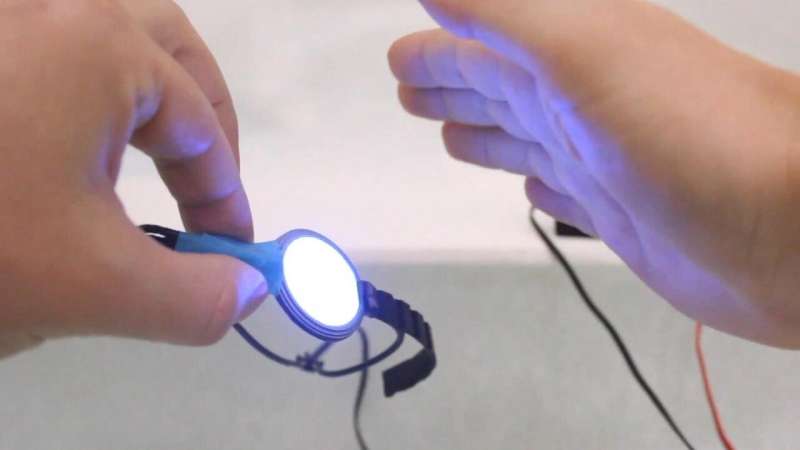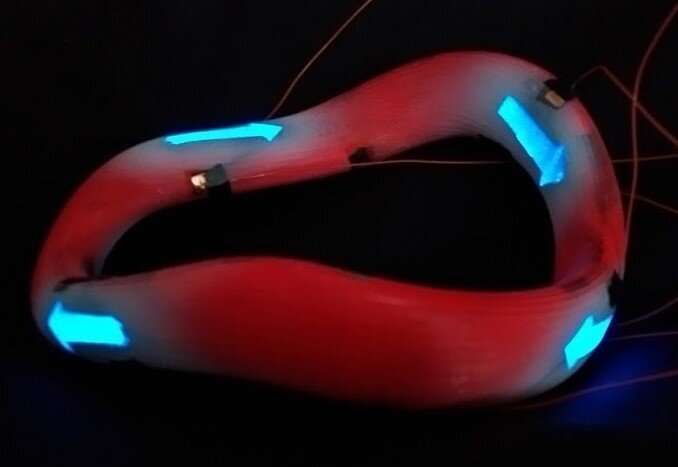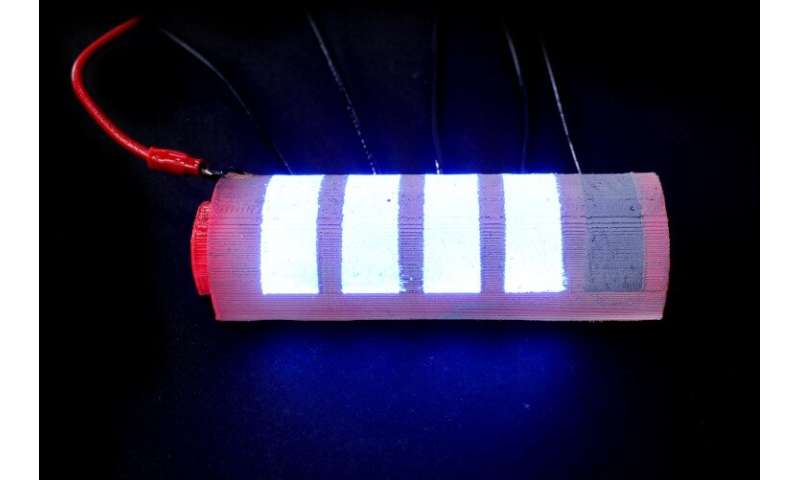Innovation challenges regular touchscreens with new spray-on technique

A team at Bristol has challenged the idea that touchscreens are limited to 2-D and rectangular shapes by developing an interactive display that can be sprayed in any shape.
Inspired by the way an artist creates graffiti on a wall and using a novel combination of sprayable electronics and 3-D printing, the technique, called ProtoSpray, allows the creation of displays on surfaces that go beyond the usual rectangular and 2-D shapes.
"We have liberated displays from their 2-D rectangular casings by developing a process so people can build interactive objects of any shape. The process is very accessible: it allows end-users to create objects with conductive plastic and electroluminescent paint even if they don't have expertise in these materials," said Ollie Hanton, Ph.D. student and lead author of the research.
Mr Hanton's paper on the innovation was presented and received an honorable mention at the ACM Conference on Human Factors in Computing Systems (CHI) - generally considered the most prestigious academic conference in the field of human-computer interaction.
The aim of the EPSRC-funded research was to broaden the scope of how people can interact with digital technologies.
The ProtoSpray process, developed in collaboration with the MIT media lab, opens up potential for makers, hobbyists and researchers to develop interactive objects of different (arbitrary) shapes.
-

Arbitrary shape application. Credit: Oliver Hanton -

Spray-on display. Credit: Oliver Hanton
"3-D printers have enabled personal fabrication of objects but our work takes this even further to where we print not only plastic but also other materials that are essential for creating displays. Using 3-D printing of plastics and spraying of materials that light up when electricity is applied, we can support makers to produce objects of all shapes that can display information and detect touch.
"Our vision is to make screen/display a fundamental expressive medium in the same way people currently use ink, paint, or clay," said Mr Hanton.
Dr. Anne Roudaut, Associate Professor in Human-Computer Interaction at the University of Bristol, who supervised the research, said the next step would be to create a machine that can both 3-D print and spray automatically onto the 3-D printed objects.
More information: Ollie Hanton et al, ProtoSpray: Combining 3D Printing and Spraying to Create Interactive Displays with Arbitrary Shapes, Proceedings of the 2020 CHI Conference on Human Factors in Computing Systems (2020). DOI: 10.1145/3313831.3376543



















